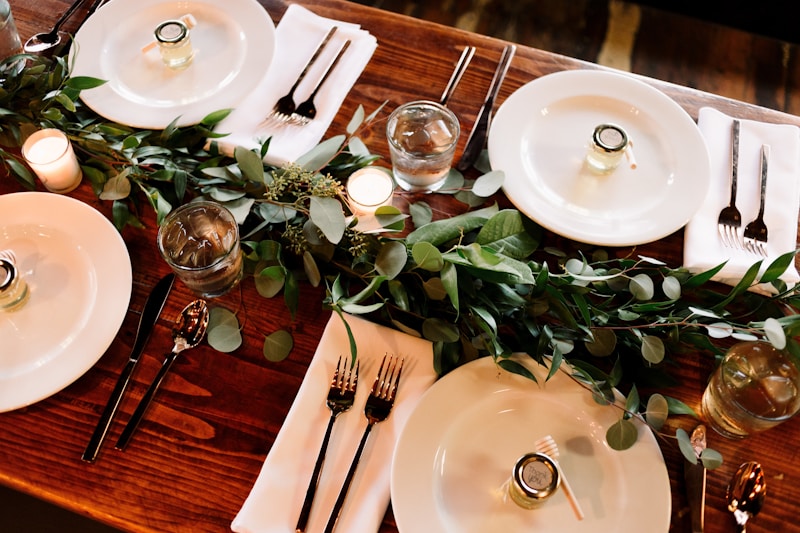Navigating Wedding Dress Adjustments: A Complete Guide for Brides-to-Be
Preparing for your wedding day is an exciting yet challenging experience, and one of the most significant factors in ensuring you look your best is your wedding dress. However, finding the perfect fit often requires a few adjustments. Understanding how to navigate wedding dress adjustments can make all the difference in achieving that dream look. This guide will walk you through everything from initial fittings to common concerns faced by brides. Let’s dive in!
Understanding Wedding Dress Adjustments
Wedding dress adjustments refer to the alterations made to ensure your dress fits perfectly. Adjustments may involve shortening the hem, taking in or letting out seams, or adjusting the straps. Knowing what to expect can ease a lot of stress in the lead-up to your big day.
When to Start Scheduling Alterations
Most experts recommend starting your wedding dress adjustments at least three months before your wedding date. This timeline allows ample opportunity for multiple fittings and ensures that any special requests from your bridal salon can be met. If your wedding is in a popular season, like summer, you might want to start even earlier.
Choosing the Right Seamstress
Finding a skilled seamstress is crucial. Here are some tips for selecting the right professional:
- Seek Recommendations: Ask friends and family for referrals or read online reviews.
- Check Qualifications: Ensure that the seamstress has experience working specifically with wedding dresses.
- Schedule a Consultation: Meet with potential seamstresses to discuss your needs and get a sense of their style.
Common Types of Adjustments
| Adjustment Type | Description |
| Hem Length | Shortening or lengthening the dress to suit your height and shoe choice. |
| Waistline Adjustments | Taking in or letting out the waist for a snug fit. |
| Bust Adjustments | Altering the bust area for better support and comfort. |
| Strap Adjustments | Adjusting strap length for a better fit on the shoulders. |
| Style Modifications | Changing elements such as neckline or adding embellishments as desired. |
How Many Fittings Will You Need?
Brides usually require at least two or three fittings before the final adjustments. The first fitting typically involves assessing the initial fit and discussing what changes may be needed with your seamstress. The subsequent fittings will allow for small adjustments based on your feedback and any additional decisions you make about your dress.
What to Bring to Your Fittings
When you go for fittings, be well-prepared. Here’s a checklist of what to bring:
- Your wedding shoes to ensure proper hem length.
- Your undergarments, particularly if you plan to wear shapewear or a specific bra.
- Any accessories, like your veil or any jewelry you may wear.
- A support person, if you wish, to help you make decisions.
Addressing Common Concerns
Brides often have concerns regarding dress adjustments. Here are a few common issues and how to address them:
1. Concerns About Fit
Every bride wants to feel confident in her dress. If you're worried about the fit, communicate this with your seamstress. Good communication can help alleviate concerns, ensuring you receive the bespoke design you dream of.
2. Altering a Vintage or Heirloom Dress
Adjusting a family heirloom can be daunting. Work with a seamstress who specializes in vintage dresses to preserve the dress’s integrity while making it fit you.
3. Cost of Adjustments
The price for wedding dress adjustments can vary based on complexity, fabric type, and your location. Generally, costs can range from $200 to $800. Always get an estimate before proceeding with alterations.
Tips for Maintaining Your Dress After Adjustments
Once your alterations are completed, you'll want to keep your dress in pristine condition. Here are some maintenance tips:
- Store Properly: Hang it up in a breathable garment bag, ensuring it is not compressed.
- Avoid Direct Sunlight: Keep your dress in a cool, dark place to prevent fading.
- Do a Final Check: Right before your wedding, double-check the fit to ensure it hasn't shifted unexpectedly.

Conclusion
Navigating wedding dress adjustments doesn’t have to be a daunting process. With proper planning and good communication with your seamstress, you can achieve the perfect fit for your big day. Remember, starting early is your best friend in this process. Planning not only allows you time to get accustomed to your dress but also ensures you enjoy every moment leading up to your wedding. Choose wisely when picking a professional for your adjustments, and don’t hesitate to voice your concerns – after all, this is your special day! Good luck, and may you walk down the aisle feeling as wonderful as you deserve!